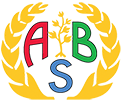Asperger’s syndrome was first coined by Austrian pediatrician, Han Asperger, who observed young boys with autism-like behaviors. Asperger noted that the boys all exhibited difficulties with social cues and communication skills, possessing the tendency to focus on one specific interest. When compared to their peers with other types of autism, Aspereger observed they had strong verbal language skills and intellectual ability. As a result, many health professionals believed Asperger’s syndrome to be a milder form of autism, using the term “high-functioning autism” to describe individuals with this syndrome.
What is thought that distinguishes Asperger’s syndrome from classic autism are its milder symptoms and absence of language delays. Children with this syndrome want to fit in and have interactions with their peers but may be socially awkward and find it hard to understand conventional social cues, such as gestures and sarcasm. Children with this syndrome may have unusual speech patterns, such as a lack of inflection or rhythmic nature. They may also have difficulties understanding the “give-and-take” nature of a conversation. While motor difficulties are not a specific criterion for Asperger’s, children with Asperger’s may also find it extremely difficult to perform basic motor skills like balancing or trying to walk.
Initially, Asperger’s syndrome was added to the DSM-IV as its own separate disorder from autism. Now, we understand Asperger’s syndrome to longer be considered a diagnosis in and of itself. In 2013, the DSM- Asperger’s syndrome was added under the umbrella diagnosis of autism spectrum disorder.




